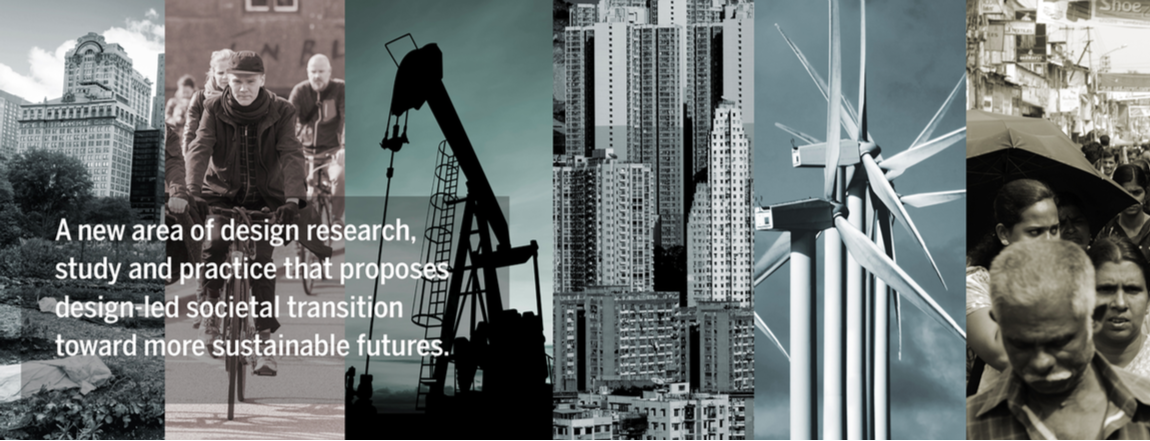
Bianca Greeff, Graduate Assistant.
Designers are agents of change. They research how our everyday actions and behaviors are conceived, planned, and acted on. By making these intangible aspects of society tangible, designers have the ability to communicate about or change these societal features. In the past, design has been leveraged as a way to create social change. But, these attempts have not always articulated ways to catalyze change.
Transition Design is a nascent idea that acknowledges we are living in transitional times, and recognizes the need to change at all levels of society.
Dr. Terry Irwin, Director of the Carnegie Mellon University School of Design will explain how Transition Design can address the wicked problems of the 21st century at the GCSC Seminar Series on Tuesday, Nov. 7, 4-5 p.m. in 210 ASB.
“Transition Design is a new area of design practice, study, and research focused on systems-level change,” Irwin explained. “It addresses the need for entire societies to transition towards a sustainable future.”
Transitioning into sustainable futures will require the development of new tools and methods that can be used to create societal change. By understanding the interconnectedness of social, economic, political, and natural systems, Transition Design confronts multifaceted problems from different levels and different scales.
“Instead of creating one-off solutions, we are advocating for a systems approach where you are involved in the process of creating solutions over a very long period of time in ways that connects projects, but also connects to future visions of where you want to go,” said Irwin.
Transition Design is a framework that combines a range of practices and approaches from different disciplines to create a new way of addressing problems in a specific location. In other words, Transition Design advocates for creating communities that are in tune with their natural and social systems.
Transitioning to a sustainable future will require change at all levels of society. Not only are politicians, legislators, activists, academics, and other professionals needed to design change, Irwin explains how all stakeholders need a seat at the table.
“The approach we are developing calls for stakeholder engagement and co-design with stakeholders,” said Irwin. “We define stakeholders as anybody that is being affected by the problem.”
Transition Design provides the framework that gets people involved and working together. It pulls from multiple theories across several disciplines. Transition Design also embodies ideas and concepts from non-profit and community sectors. Transition Design empowers and educates a new group of designers who work together to develop solutions to the wicked problems of our time.
“Design is not something that only designers do,’ Irwin explained. “Societal transitions need to be intentional not accidental. The minute you bring intentionality into it, it becomes design. In that way, we are all designing all the time.”
To hear more about Transition Design, attend Irwin’s seminar, “Designing for Systems-Level Change” on Tuesday, Nov. 7, 4-5 pm in 210 ASB.
